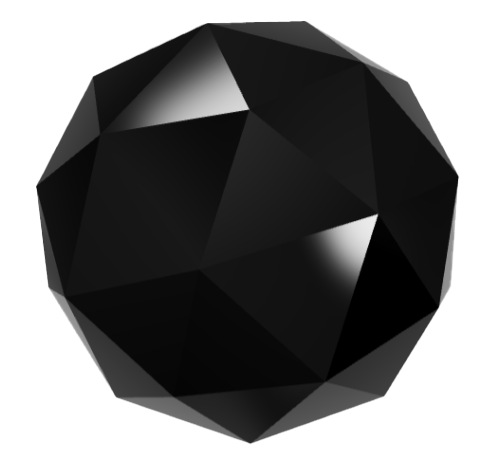Introduction to the NFT Revolution
Non-fungible tokens (NFTs) have taken the digital world by storm. Initially capturing the attention of artists, collectors, and investors, NFTs have evolved beyond simple digital art into a multi-faceted ecosystem redefining ownership and creativity in the digital space. However, the future of NFTs holds an even more exciting proposition: the integration of 3D virtual worlds.
The Current State of NFTs
As of now, NFTs primarily exist as flat images or videos, often sold on various marketplaces for significant amounts of money. These digital assets are unique and cannot be replaced, which is what makes them “non-fungible.” They have created a new paradigm for ownership on the blockchain, allowing creators to tokenize their work, whether it be art, music, or other forms of intellectual property.
However, the limitations of flat images are becoming increasingly apparent. As technology advances, so does the potential for NFTs to transcend their current state. The introduction of 3D virtual worlds offers a glimpse into a future where NFTs can be fully immersive and interactive, allowing for deeper engagement and connection between creators and their audiences.
3D Virtual Worlds: A New Frontier for NFTs
3D virtual worlds are digital environments that allow users to interact with a three-dimensional space. These worlds can range from simple platforms to complex ecosystems where users can walk around, explore, and engage with various elements. The integration of NFTs into these worlds opens up a myriad of possibilities, fundamentally changing how we perceive ownership and interaction in the digital realm.
Imagine stepping into a virtual gallery where you can walk around and view NFTs displayed in a 3D environment. Instead of just seeing a flat image, you can explore the artwork from different angles, experience animations, and even interact with the pieces. This immersive experience enhances the value of the NFT, as it becomes more than just a digital file; it transforms into an experience.
The Benefits of 3D NFTs
The shift from flat images to 3D NFTs offers several advantages:
1. Enhanced Engagement
3D virtual worlds allow for a level of engagement that flat images cannot provide. Users can interact with the virtual space, create their own experiences, and even collaborate with others, leading to a deeper connection with the art and the artist.
2. New Revenue Streams
The integration of NFTs into 3D worlds can open up new revenue streams for artists and creators. Virtual galleries can charge entrance fees, host exclusive events, or even sell virtual merchandise, allowing creators to monetize their work in innovative ways.
3. Greater Accessibility
3D virtual worlds can make art and culture more accessible. People from around the globe can enter a virtual gallery without the constraints of physical location. This democratization of access can help artists reach wider audiences and create more inclusive spaces.
Case Studies: Pioneering 3D NFT Projects
Several projects are already exploring the integration of NFTs into 3D virtual worlds, paving the way for future developments:
1. Decentraland
Decentraland is a fully decentralized virtual world where users can buy, sell, and build on parcels of virtual land. Users can create unique experiences, from art galleries to games, and monetize their creations using NFTs. This platform exemplifies how 3D environments can enhance the experience and value of digital assets.
2. Cryptovoxels
Cryptovoxels is another virtual world that allows users to build and own their spaces using NFTs. Artists can display their work in virtual galleries, and users can purchase land and create experiences that showcase their creativity. The interactive nature of Cryptovoxels enhances the value of NFTs, as users can explore and engage with art in a 3D space.
3. Somnium Space
Somnium Space is a Virtual reality platform that focuses on creating an immersive experience. Users can walk around in a VR headset, interact with NFTs, and attend events. The platform emphasizes social interaction, allowing users to connect with others in a vibrant virtual community. This level of immersion takes NFTs to a new level, making them more than just collectibles.
The Future of 3D NFTs
As technology continues to evolve, the possibilities for 3D NFTs are limitless. Here are some potential future developments:
1. Integration with Augmented Reality
The integration of NFTs with augmented reality (AR) could revolutionize how we interact with digital assets. Imagine being able to project a 3D NFT into your physical space, allowing you to interact with it in real-time. This fusion of digital and physical worlds will create new forms of engagement and ownership.
2. Interactive Storytelling
3D NFTs could pave the way for interactive storytelling experiences. Artists and creators could design immersive narratives where users can explore different paths and make choices that affect the outcome. This level of interactivity could change the landscape of digital storytelling, offering a more engaging experience for audiences.
3. Community-Driven Experiences
The future of 3D NFTs may also emphasize community-driven experiences. Users could collaborate to create virtual spaces, host events, and curate collections, fostering a sense of belonging and shared ownership. This community aspect could redefine how we perceive value in the digital realm.
Challenges and Considerations
While the future of 3D NFTs is promising, it is not without challenges. Some considerations include:
1. Technical Limitations
The creation and maintenance of 3D virtual worlds require significant technical resources. Not all artists or creators have the skills or tools needed to bring their visions to life, which could limit participation in this new ecosystem.
2. Market Saturation
As the NFT space becomes more popular, there is a risk of market saturation. With so many creators entering the space, it may become challenging for individual projects to stand out. Artists will need to find innovative ways to differentiate their work and create unique experiences.
3. Environmental Concerns
The environmental impact of blockchain technology is a significant concern. The energy consumption associated with NFTs and virtual worlds can be substantial. As the industry evolves, it will be crucial to prioritize sustainability and explore eco-friendly alternatives.
Conclusion
The future of NFTs lies in the integration of 3D virtual worlds, offering unprecedented opportunities for engagement, creativity, and community. As technology advances, we can expect to see a shift from static digital assets to dynamic, interactive experiences that redefine ownership in the digital realm. While challenges remain, the potential for innovation and transformation in the NFT space is immense. Artists, creators, and collectors alike should prepare to embrace this exciting new frontier.
FAQs
1. What are NFTs?
NFTs, or non-fungible tokens, are unique digital assets verified using blockchain technology. Unlike cryptocurrencies, which are interchangeable, each NFT has distinct properties that make it one-of-a-kind.
2. How do 3D NFTs differ from traditional NFTs?
3D NFTs exist in virtual environments, allowing for interactive experiences, while traditional NFTs are typically flat images or videos. This interactivity enhances engagement and adds value to the digital asset.
3. What platforms are best for exploring 3D NFTs?
Platforms like Decentraland, Cryptovoxels, and Somnium Space are popular for exploring 3D NFTs. Each offers unique features and experiences for users to engage with digital art and assets.
4. Are there any environmental concerns associated with 3D NFTs?
Yes, the energy consumption of blockchain networks raises environmental concerns. As the NFT industry grows, it’s essential to prioritize sustainable practices and explore eco-friendly blockchain alternatives.
5. How can creators get started with 3D NFTs?
Creators can start by exploring 3D design tools and platforms that support NFT integration. Familiarizing themselves with virtual world creation will be crucial for bringing their ideas to life in 3D spaces.
Discover more from The Meteyeverse
Subscribe to get the latest posts sent to your email.

